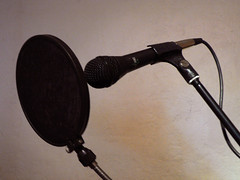B. Thomas Cooper
Editor
Believe it or not, the modern bass as we know it today has roots dating back to the 17th century. The first electric bass, however, was invented by Lloyd Loar during the 1920’s while the legendary luthier was working for the Gibson Guitar company. Pardon the pun but during the last half a century, the bass has become instrumental in the development of modern music.
Recording the bass however, depends greatly upon the setting, and likewise, the recording techniques applied can vary tremendously. Let's get started, shall we?
We will start with the acoustic bass, a mutant string instrument designed to be plucked with the fingers. There are no frets on an upright acoustic bass, as the instrument has much in common with it's cousin, the cello. This puppy is anything other than simple to 'mic. The preferred method requires attaching a contact condenser microphone either to the inside of the of the instrument, or to the bridge of the bass ( the part where the strings pass over the saddle of the instrument.)
An acoustic bass can also be recorded or captured' using ambient microphones placed at a distance from the instrument, creating a warmer sound with less attack. However, this method is subject to bleed over, or cross - talk from other instruments in the room, thus the need for a direct signal.

The electric bass is an entirely different beast, and proper recording methods probably shouldn't even be covered in the same article. As such, I'll try to keep my explanation short and simple.
An electric bass is connected to an amplifier, preferably using a shielded cable to prevent signal interference. The amplifier is then mic'd' using an array of microphones, although, no more than two at a time, thank you. A direct line may also be employed in order to capture a clean signal. The engineer then has the option to use various combinations of the recorded instrument to create an acceptable sound. The same applies to live performance or recording situations. Take your time, and think through the process, as it is almost never as easy as some would like you to believe.

Having spent the better part of three decades recording, I am still surprised by the sheer volume of of unadulterated misconceptions about the process. For those readers serious about learning to record bass track, there are countless articles on the subject available online and perhaps even your local library. Learn all you can about your craft, and by all means, enjoy the process. After all, isn't that really what it's all about?










